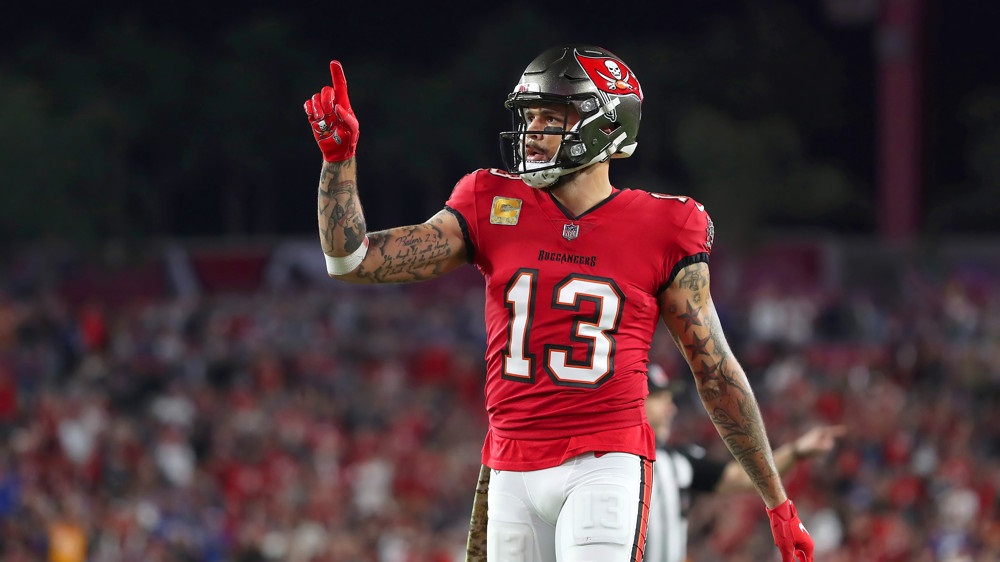This article originally appeared in The 2021 Football Rookie Handbook.
Most people who have played football on turf will generally agree that—well—it hurts! Even as technology has improved and artificial surfaces have gotten better, NFLPA President JC Tretter made the case as recently as 2020 that the NFL should move away from turf fields for both practices and games because of the impact that they can have on players’ bodies.[1] He cited injury data from the NFL that showed elevated injury risk on turf relative to grass to back up his point. Specifically, he pointed to non-contact lower extremity injuries as the main culprit.
Previous research jibes with Tretter’s argument to varying degrees. Our friend, Dr. Zach Binney, wrote for Football Outsiders in 2017 about how certain turf types performed slightly more poorly in terms of injury risk when compared to grass, but he stopped short of making any definitive conclusions.[2] Additionally, Loughran et al. wrote about knee injury incidence on turf versus grass in college football in the American Journal of Sports Medicine in 2019, finding that artificial turf was a significant risk factor for certain knee ligament injuries.[3]
Since we have the most comprehensive football injury database in existence, we decided to take a look to see what we could find.
Are NFL injury rates higher on turf or grass?
In the NFL over the last four years, there have been both more total injuries and more injuries forcing players to leave the game on games played on turf relative to grass.
| NFL Injuries by Field Type (2017-2020, Regular Season only) | |||
| Field Type | Games | Injuries Per Game | Left the Field Per Game |
| Grass | 587 | 5.0 | 4.1 |
| Turf | 437 | 5.4 | 4.5 |
| Percent Change | +7.8% | +9.2% | |
This indicates that about 48 extra injuries that cause players to leave the field are occurring each regular season needlessly because almost half of NFL teams play their home games on turf.
To be fair, these numbers could be biased by the teams that play in the stadiums. In other words, any team-level factor from the players to the training staff to the cafeteria could be a confounding factor that is actually responsible for the injury rates. To account for this, we can look at just away players to help control for the fact that the home team’s players make up about half of all snaps played in any given stadium.
| NFL Injuries by Field Type (Away Players only) | |||
| Field Type | Games | Injuries Per Game | Left the Field Per Game |
| Grass | 587 | 2.5 | 2.1 |
| Turf | 437 | 2.8 | 2.3 |
| Percent Change | 8.8% | 7.7% | |
The effect appears to be about as large for the road teams, indicating that our initial finding isn’t a result of home teams biasing the study. For the rest of the article, we will generally use the totals across home and away players for the sake of sample size, but we will indicate if/where there are any differences of note.
As an aside, if you notice that away players are generally slightly more likely to be injured and leave the game than home players, that is an astute observation by you. This result is consistent from season to season, but it’s not the subject of this article.
Which body parts are most affected by turf?
Previous research suggests that lower extremity injuries, specifically, are more likely to see an increase on turf. We found this to be true in the case of ankle/foot injuries, but not so for the rest of the legs, including knees.
| NFL Injuries Per Game by Field Type and Body Part | |||
| Body Part | Grass | Turf | Percent Change |
| Head | 0.76 | 0.90 | +18% |
| Shoulder | 0.39 | 0.42 | +9% |
| Arm/Hand | 0.42 | 0.43 | +1% |
| Core | 0.34 | 0.37 | +9% |
| Upper Legs / Hips | 0.46 | 0.46 | -1% |
| Lower Legs / Knee | 1.25 | 1.23 | -2% |
| Ankle/Foot | 0.96 | 1.05 | +10% |
It’s worth noting that these results are generally very consistent when we split the sample to look at away players only, injuries that forced the player to leave the field only, and both.
One thing that sticks out is that shoulder, core, and to an even larger extent head injuries are occurring considerably more often. While it’s not clear why this is happening, when we consider that each team hosts eight regular season games per year, the increase of 0.14 head injuries per game represents an additional 1.12 head injuries per team that chooses to play on turf per season. Another way to think of that is that each year that each turf team continues to play on their surface, they are adding more than one unnecessary head injury every time.
Still, the most surprising finding was that lower leg and knee injuries decreased on turf fields when compared to grass fields. While the difference was small and inconsistent from year to year, previous research had indicated that these were precisely the injuries that turf seemed to induce, so the finding that there is no real difference in this sample is notable.
One potential explanation for this is that the makers of the artificial turf that the NFL teams have been using have been able to focus their technological improvements on this previously identified weakness. If that is the case and not a four-year anomaly, then hopefully head, shoulder, core, and ankle/foot injuries can see a positive change as well.
What types of injuries are occurring more (or less) on turf?
The specific injury diagnoses that had been found by previous research to increase on turf included knee and ankle sprains. To be clear, sprains include what people colloquially describe as tears. Anytime a ligament is sprained, that just means that there is some level of tearing going on.
| Percent Difference in NFL Injury Diagnoses Per Game on Turf Compared to Grass | ||
| Diagnosis | All Players | Away Players Only |
| Knee Sprain | -3% | -6% |
| Ankle Sprain | +4% | +6% |
The numbers mostly match up with what we saw when breaking things down by body part. In this sample, knee sprains are slightly down on turf and ankle sprains are slightly up, but neither change by significant amounts. The magnitude of these changes were much smaller than what was observed by previous research, which in some cases found double-digit increases on turf.
How do contact vs non-contact injuries factor into this?
| NFL Injuries per Game by Field and Contact Type (2017-2020) | |||
| Field Type | Non-Contact | Contact with Ground | Contact with Player |
| Grass | 0.82 | 0.80 | 3.39 |
| Turf | 0.80 | 0.85 | 3.76 |
| Percent Change | -3% | +6% | +11% |
Once again, our findings are at odds with previous research. We’re again seeing a slight decrease in injury rates on turf relative to grass where we expected to see an increase, this time in the form of non-contact injuries. Still, injuries involving contact between two players are much more common, and the magnitude of increase in those sorts of injuries on turf compared to grass offsets the decrease in non-contact injuries several times over.
The effects are consistent whether we look at all players, only away players, only injuries that cause players to leave the field, or away players whose injuries cause them to leave the field.
| Percent Difference in NFL Injuries Per Game By Contact Type
On Turf Compared to Grass |
||||
| Contact Type | All Injuries | Injuries to Away Players Only | Significant Injuries (Left The Field) | Away Players & Left The Field |
| Non-Contact | -3% | -14% | +1% | -13% |
| Contact with Ground | +6% | +8% | +10% | +8% |
| Contact with Player | +11% | +15% | +11% | +13% |
What about non-contact lower body injuries?
JC Tretter mentioned three specific data points when he called on the NFL teams to adopt grass practice and playing surfaces in September of 2020:
“Specifically, players have a 28% higher rate of non-contact lower extremity injuries when playing on artificial turf. Of those non-contact injuries, players have a 32% higher rate of non-contact knee injuries on turf and a staggering 69% higher rate of non-contact foot/ankle injuries on turf compared to grass.”
While he was citing the NFL’s own injury data, which is both from different seasons (2012 to 2018) than our dataset covers and seems to mix data from practices and games, these results were not at all consistent with our findings.
| Percent Difference in NFL Non-Contact Injuries Per Game
By Body Part on Turf Compared to Grass |
||||
| Body Part | All Injuries | Injuries to Away Players Only | Significant Injuries (Left The Field) | Away Players & Left The Field |
| Lower Extremity | -12% | -17% | -11% | -15% |
| Knee | -18% | -30% | -16% | -23% |
| Ankle/Foot | -3% | +6% | -2% | 0% |
Just about any way we sliced it, non-contact lower extremity injuries were reduced, not increased, on turf relative to grass. It was “Contact with Player” injuries, which are much more common to begin with, that drove the overall increase in injury rates on turf.
Last Word
The SIS Injury Database matched previous research on the topic of grass versus turf in that we have observed a clear increase in injuries per game in stadiums with turf in NFL games over the last four years. However, our findings do not match prior research in that we did not find an increase in non-contact and/or knee injuries. Instead, we found that injuries occurring because of contact between players were overwhelmingly what accounted for the increase in injuries. Somewhat concerningly, we saw an increase in head injuries on turf, so we will keep a close eye on how these trends continue to develop in the years to come.
[1]JC Tretter, “Only Natural Grass Can Level The NFL’s Playing Field,” NFLPA.com, https://nflpa.com/posts/only-natural-grass-can-level-the-nfls-playing-field.
[2]Zachary Binney, “Turf Type and NFL Injuries Part I,” FootballOutsiders.com, 2017, https://www.footballoutsiders.com/stat-analysis/2017/turf-type-and-nfl-injuries-part-i.
[3]Galvin J Loughran, Christian T Vulpis, Jordan P Murphy, David A Weiner, Steven J Svoboda, Richard Y Hinton, Dave P Milzman, “Incidence of Knee Injuries on Artificial Turf Versus Natural Grass in National Collegiate Athletic Association American Football: 2004-2005 Through 2013-2014 Seasons,” American Journal of Sports Medicine, May 2019, https://pubmed.ncbi.nlm.nih.gov/30995074/.


